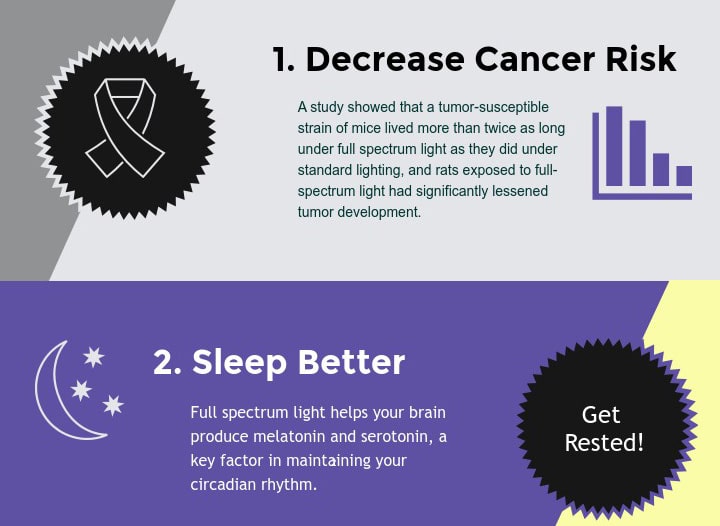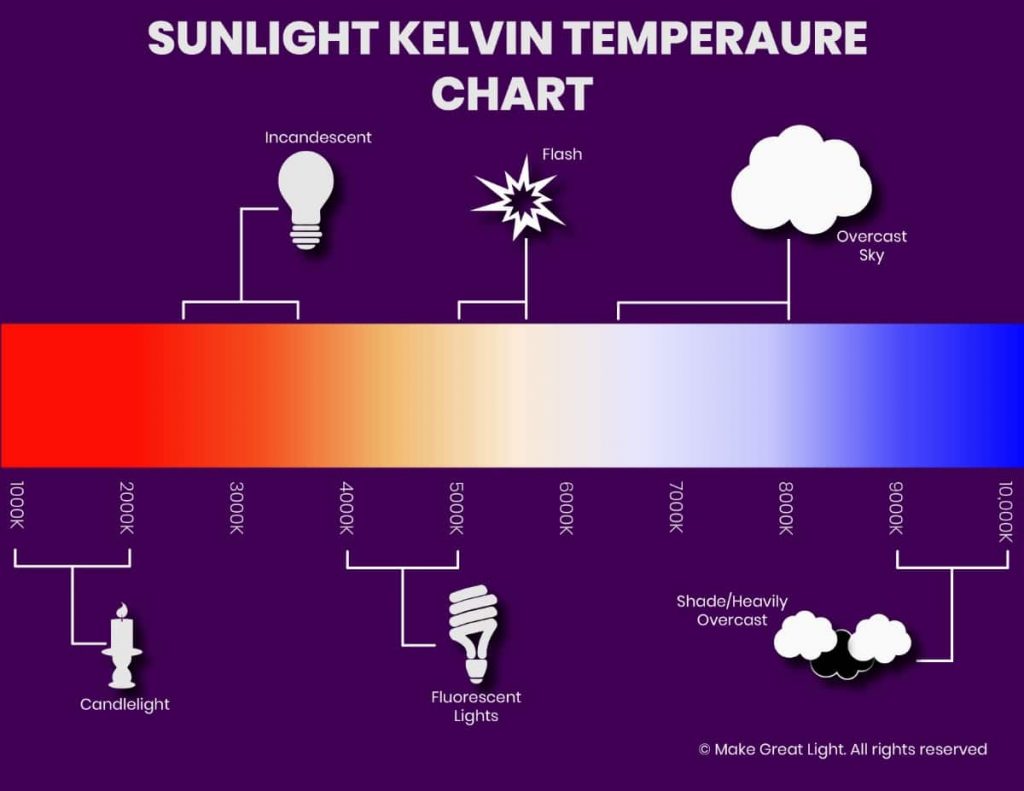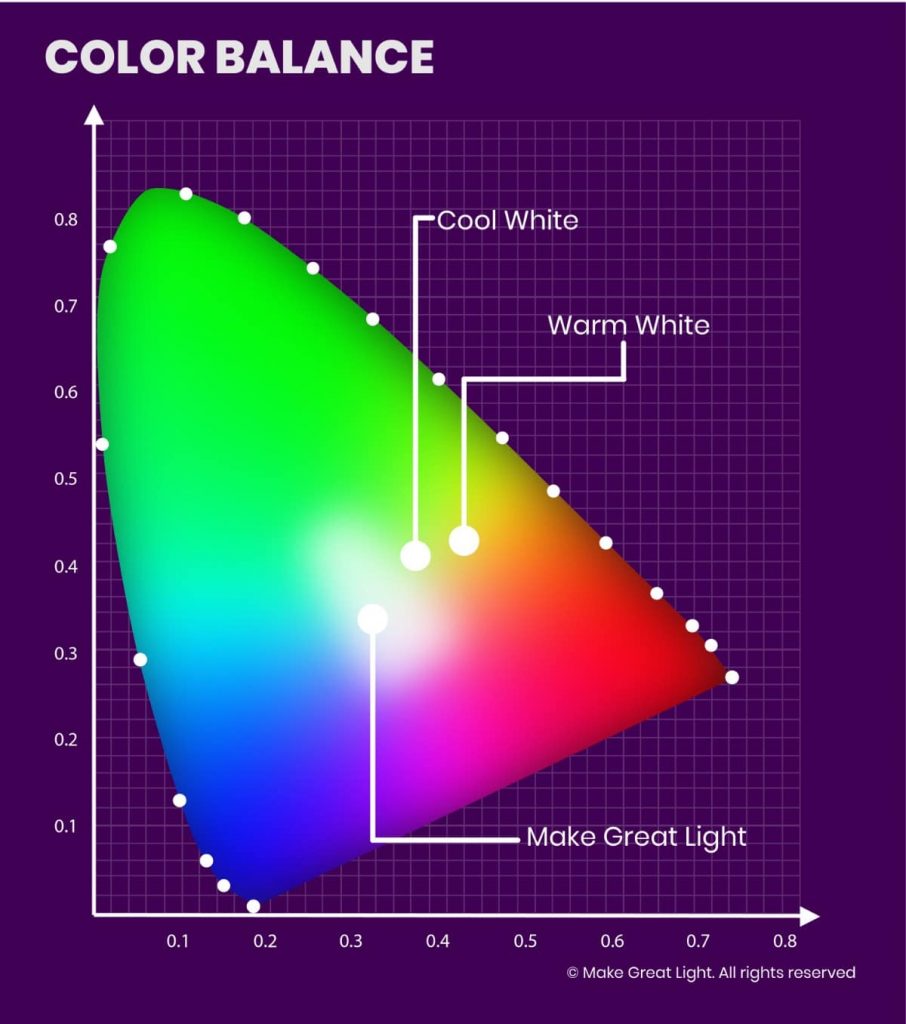Full-spectrum light bulbs are the closest we can come to natural daylight. Among other benefits, they reduce eye strain, glare and influence productivity. But there’s a downside to full-spectrum light bulbs— they are expensive. This means that it will cost you a handsome amount to install them when covering multiple rooms. That said, you can still get to enjoy the full spectrum benefits without an overload of costs associated with them.
What is a full spectrum light bulb?
Full spectrum light bulbs are specifically manufactured to include more of the visible spectrum of light. All light has colors present in it: red, green, blue, violet, yellow etc. Sunlight is considered naturally full spectrum. For indoor lighting, the higher the color temperature and color rendering index (CRI) the closer the light is to natural sunlight.
Read more on full spectrum light bulbs
NATURALUX™ Full Spectrum Light Filters
For half the cost, you can enjoy the same full-spectrum light type without necessarily installing these lights. NATURALUX™ provides light covers that transform LED and fluorescent lights into full-spectrum light. The light filters are energy efficient while still creating an environment that mimics healthy and natural daylight. You can install full spectrum light filters over your fluorescent bulbs.
How do NATURALUX™ Full Spectrum Filters Work?
As the fluorescent or LED light passes through the filter, it imitates various colors in the light spectrum, producing a natural sunlight color. You don’t need to change or install new lighting fixtures to use our light filters. You only need to lay them over existing light fixtures and enjoy the direct, immediate full-spectrum light change.
What To Expect With NATURALUX™ Full-spectrum Light Filters
After installing our light filters, be prepared for a whole transformation in the room. See how bright and natural this room appears after the installation of NATURALUX™ light filters. Everything will look more radiant and closer to its natural colors. Your eyes will also appreciate the reduced eye strain and fatigue that accompanies fluorescent lighting. We should also mention that you can expect fewer energy bills and more efficiency with full-spectrum light covers.
Now, let’s tackle some common questions regarding full-spectrum light bulbs.
Are Daylight Light Bulbs the Same as Full Spectrum?

Most people use the term daylight bulbs and full-spectrum lights interchangeably. However, the two types are pretty different from each other. Daylight bulbs are a type of lighting that mimics the natural color temperature of light— which is usually between 5000k and 6000k. Most daylight bulbs will have a color temperature of between 4500k— 6500k.
On the other hand, full-spectrum light bulbs produce light with all the visible spectrum as the sun does, although in different frequencies. Another factor that comes into play when differentiating daylight bulbs from full-spectrum lights is the Color Rendering Index(CRI).
Compared to daylight bulbs, full-spectrum lights come closer to mimicking the sun in both color temperature and CRI.
The Color Rendering Index assesses how accurately a light source shows the true color of objects compared to natural daylight. The higher the CRI of a light source, the more it looks like natural daylight.
Daylight bulbs will have a CRI of about 80, while full-spectrum lights will have a CRI of over 90. Additionally, daylight bulbs lack enough red color in their spectrum compared to full-spectrum bulbs. This means that if you were to observe an apple under daylight lighting, it would appear duller than when observed under full-spectrum lighting.
Are Full-spectrum Light Bulbs Healthy & Safe?
Before we even answer this question, we need to understand that full-spectrum lights come in the form of incandescent bulbs, LEDs, or fluorescent bulbs. Incandescent full-spectrum lights use a neodymium glass enclosure to filter the warm colors that make incandescent lighting look yellow. The incandescent full-spectrum bulbs will look purple when turned off.
On the other hand, fluorescent full-spectrum lights use phosphors to reach a broader range of natural kelvin temperatures that mimic daylight color. Now that we understand the workings, are full-spectrum bulbs harmful?
According to the Lighting Research Center, full-spectrum lights do not affect people’s health any more than other light sources. Meaning, they are relatively safe for indoor use, although some people might experience some form of sensitivity over extensive periods.
It’s good to note that full-spectrum is more of a marketing term than a technical term. This means that full-spectrum mimics natural daylight, but it is not the same as daylight. No artificial light can perfectly mimic natural daylight. Hence, full-spectrum lights are not an absolute alternative to natural lighting. It would be best if you still had ten to thirty minutes of exposure to sunlight for Vitamin D intake.
On the issue of UV radiation, full-spectrum light does not produce enough UV rays to be considered a health threat. In fact, spending eight hours under full-spectrum lighting will only produce a UV dose lower than one minute spent outdoors.
Are Led Light Bulbs Full Spectrum?
Not all LED light bulbs are full-spectrum lights. Some LEDs may use different color diodes such as green, blue and red, though this doesn’t make them full-spectrum lights. That said, there are numerous LED full-spectrum lights in the market today. LED full-spectrum lights utilize white diodes to create or imitate light wavelengths like those of natural daylight.
How do you know if your LED light bulb is a full-spectrum?
Generally, a light can classify as full-spectrum if it has a temperature of over 5000k and a CRI of over 90. Most LED full-spectrum lights will fall between 5500k and a CRI of 94.
Why Use Full-spectrum Light Bulbs?
There’s a reason why full-spectrum lights have gained such popularity in recent years. From grow LED full spectrum lights to indoor full-spectrum bulbs, these lights are quite beneficial for everyday use.
For instance, if you suffer from Seasonal Affective Disorder (SAD), full-spectrum light can help you manage the symptoms. Because full-spectrum lights mimic natural daylight, your exposure to a full-spectrum light-therapy box will help you reduce the effects of SAD. This is incredibly helpful for SAD sufferers as it can quickly alleviate the effects during low sunlight seasons such as winter.
Also, full-spectrum lights are free of visible flicker. Most other lights have a visible flicker effect which is known to cause eye problems, including eye strain and photosensitivity. Full-spectrum lights, therefore, can help you avoid such issues, especially when you work indoors over long periods.
Indoor areas to install full-spectrum lights
You can install full-spectrum lights in any room that requires an extra lift of brightness. More specifically, full-spectrum lights work well in the kitchen and bathroom areas. Likewise, because of their brightness, full-spectrum will be an excellent choice for high-level color discrimination activities in retail stores, art rooms, classrooms and photography studios. They will also come in handy for use in craft rooms where you need that extra bit of brightness.
What are the Benefits of Full-spectrum Light Bulbs?
Improves Mood and Reduces Fatigue
Full-spectrum light bulbs come with a wide range of benefits. For starters, full-spectrum light bulbs have been linked to improved mood. This may be attributed to their characteristic nature of mimicking outdoor light. As opposed to incandescent, the light projected by full-spectrum light bulbs is much easier on the eye and does not cause eye strain as much.
Compared to other light types, full-spectrum light bulbs make a room appear brighter, which will lighten up anyone’s day. In turn, this reduces fatigue, especially in workers and students who spend much of their time indoors.

Reduced Light Glare
The full-spectrum light bulbs provide balanced brightness and contrast when used indoors, resulting in reduced glares. For this reason, they are perfect for enhanced readability and overall good vision indoors.
Increased Visual Acuity
Full-spectrum light bulbs are some of the best when it comes to color rendering. This means that they show the true color of objects accurately as natural light would. Not only do they make a room look better, but this makes them essential for workers whose job involves acute color discrimination.
Reduced Stress
A light research study found that fluorescent full-spectrum lights produced significantly fewer stress hormones than cool white lamps. In other words, human beings can tolerate full-spectrum lights better without the associated rise in stress from light exposure.
Why are Full-spectrum Light Bulbs so Expensive?
Full-spectrum lights will often be priced four to ten times more than lights without the full-spectrum label. This hike in price can be tied back to the benefits expressed by most manufacturers.
Currently, the bulbs can range between $7.85 to $19.99. This is despite the fact that they produce less light, and hence, you’ll need more of them to maintain the same level of illumination as other lights.
The expenses don’t stop there. Full-spectrum lights are more likely to have a shorter life span compared to fluorescent or LED lamps. They may also require replacement often to maintain their spectral component, leading to more costs.
Enjoy the Benefits of Full-spectrum Lights Without Spending a Fortune
If you’re tired of dealing with migraines and sensitivity from the wrong light sources, NATURALUX TM light filters can help you alleviate these issues. Interestingly, you don’t have to spend a fortune to enjoy the benefits of full-spectrum light bulbs. Our light filters will provide immediate transformation of your fluorescent or LED lighting into natural-looking full-spectrum light.
Shop light covers today to give your indoors a transformation and your eyes a break from glare and strain.



Do your full spectrum light covers work on computer screens?
I have some “basic questions” regarding light spectrum and LED’s. I have an idea to manufacture a tool but am unsure (a) if my idea is too fanciful to have any validity (b) how to then “manufacture” it.
I’m looking for different experts in the “field” to get some answers or pointed in the right direction. If you are willing to reach out and discuss further, I would appreciate the convo and see how to make it mutually beneficial if it is indeed a “good idea”.